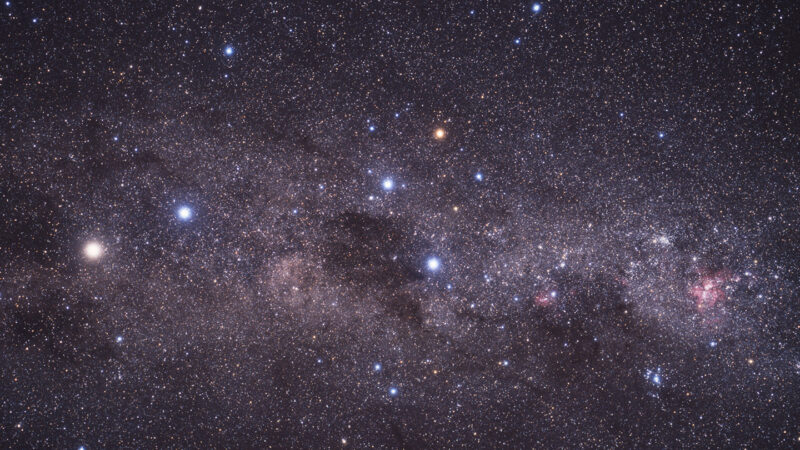A neighboring star system is likely shedding comets and asteroids into our solar system — and even producing a few meteors in our sky.
Just 4.3 light-years from Earth, this next-door neighbor, Alpha Centauri, is the star system nearest to our sun. Instead of one sun like our solar system, this one has three stars. They go around one another.
In our solar system’s backyard, beyond Pluto, lies the Oort cloud. This distant swarm of icy, comet-like objects orbits our sun, much like moths fly around a streetlight. Alpha Centauri might have an Oort cloud in its most distant regions, too. A million of its comets — each larger than a football field — could be mingling with comets in our sun’s own Oort cloud, new calculations indicate.
“Most of [the objects] would be in the far reaches of the solar system,” says Cole Gregg. He and Paul Wiegert teamed up for this research. Both astronomers work at the University of Western Ontario. That’s in London, Canada.
They submitted their findings February 5 to arXiv.org.
So far, astronomers have only ever detected one interstellar asteroid and one interstellar comet in our solar system. Neither traced back to Alpha Centauri.
An interstellar gravity assist
Comets need a boost to leave their local orbit and enter interstellar space. As a comet passes close by a star, planet or moon, it gets a gravity assist. This naturally changes its speed and direction. Space scientists used Jupiter’s gravity to catapult the two Voyager spacecraft onto interstellar trajectories. Likewise, Alpha Centauri’s stars (and their planets) could slingshot comets and asteroids toward our solar system.
A small share of the ejected objects — only some 0.03 percent — pass through our solar system, Gregg and Wiegert calculate. None of these large objects are close enough for our telescopes to see.
Still, small particles from Alpha Centauri probably reach Earth’s atmosphere and burn up. Gregg and Wiegert estimate that up to 10 meteors worldwide come from Alpha Centauri each year.
“When Alpha Centauri is closest,” Gregg says, his team expects these numbers to go up some 10-fold. Alpha Centauri is now racing toward Earth at about 80,000 kilometers (50,000 miles) per hour. At its closest, 28,000 years from now, this system will be just 3.2 light-years from Earth.
Earth sees a total of some 7 trillion meteors a year. So even 100 meteors more wouldn’t be many. And Alpha Centauri lies far to the south. That means its meteors appear only in the far southern sky. You’d likely have to be in the Southern Hemisphere to see them, Gregg and Wiegert point out.
“Their calculations are right,” says Simon Portegies Zwart. He’s an astronomer at Leiden Observatory in the Netherlands. But he sees a problem in that team’s assumptions.
We don’t know the rate at which Alpha Centauri ejects material, Portegies Zwart says. So the actual number of interstellar objects coming from our near neighbor, he says, could be much greater — or smaller — than the study calculates.
Nevertheless, he says, this work shows how “we are connected to other objects … like other stars in the neighborhood.”

















